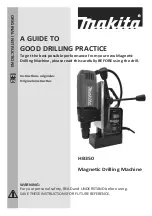
13
cooking surfaces, we do not recommend
cleaning in a dishwasher.
A chrome cleaner may be used on chrome
parts if required. To prevent rusting, wipe with
cooking oil after rinsing and drying.
8.2. Ash Tray
After every use, empty and clean the ash tray
of any fat or food particles, using a plastic or
wooden scraper if necessary.
Discard the ash and foil, and wash any
remaining ash or fat from the tray.
Failure to keep it clean, and excessive build up
can result in a fat fire. This can be hazardous
and severely damage the barbecue.
This is
not a fault in the barbecue and is therefore
not covered by the terms of the warranty.
If
required, the tray can be washed in hot soapy
water.
8.3. Barbecue Body
Regularly remove excess grease or fat from
the barbecue body using a cloth wrung out in
hot soapy water and dry thoroughly. Excess fat
and food debris can be removed from inside
the body using a soft plastic or wooden
scraper. It is not necessary to remove all the
grease from the body. If you need to clean
fully, use hot soapy water and a cloth, or
nylon-bristled brush only. Do not use
abrasives. Remove cooking surfaces before
full cleaning.
8.4. Barbecue Hood or Lid
Use a non-abrasive cloth or pad and clean with
hot, soapy water. Do not use scouring pads or
powders as they can permanently damage the
finish.
8.5. Trolley
Wipe with a cloth wrung out in hot soapy water
and dry.
8.6. Fixings
All screws and bolts, etc. should be checked
and tightened on a regular basis.
8.7. Storage
Ensure the barbecue is properly cooled before
covering or storing. Store your barbecue in a
cool dry place.
When using the barbecue after extended
periods of storage follow the cleaning
procedures.
Specifications subject to change without prior notice

































